
Resource library
This library offers a curated collection of valuable tools, guides, and resources that exist in the social enterprise sector. Explore guides, articles and many more to support your journey, whether you’re starting a social enterprise, tackling sector challenges, or navigating the impact economy.
Suggest a new educational resource or update here to help keep this library useful.
189 results found
.png?w=192)
A Beginner’s Friendly Guide On How To Conduct Market Research, Sloovi
GuidesThis concise resource provides a comprehensive guide on how to conduct market research, aimed at beginners. It explains the importance of market research, outlines different types and methods, and offers a step-by-step process for conducting research.
A Beginner’s Friendly Guide On How To Conduct Market Research, Sloovi.png?w=192)
'Aboriginal Economics', Gaala Watson (Sustainable Table)
ArticlesThis article examines Indigenous perspectives on economics and self-determination in Australia, highlighting historical dispossession, economic exclusion, and alternative frameworks for wealth. It explores Indigenous values of communal wealth, economic sovereignty tied to land and spirit, and sustainable solutions.
'Aboriginal Economics', Gaala Watson (Sustainable Table)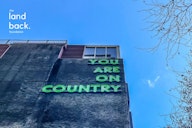
Agents of Change: Insights from First Nations Social Enterprise Leaders
WebinarsThe Land Back Foundation held an interactive session exploring how social enterprises can practice long-term allyship, accountability, and activism. The discussion shared lived experiences and practical actions for embedding equity and justice in everyday business.
Agents of Change: Insights from First Nations Social Enterprise Leaders.png?w=192)
'A Guide to Adaptive Leadership', Acumen Academy
GuidesThis guide introduces adaptive leadership, empowering individuals to lead without formal authority. It explores core principles, distinguishing adaptive challenges from technical problems, and practical steps like shifting perspectives, framing challenges, and fostering collaboration. Additional resources and free courses are included.
'A Guide to Adaptive Leadership', Acumen Academy.png?w=192)
A Guide to Empathy Mapping, Atlassian Team Playbook
GuidesThis resource provides a guide to conducting an Empathy Mapping exercise, a technique used by teams to better understand their customers' needs and experiences. It outlines a step-by-step process for creating empathy maps, including preparation, running the session, and determining actionable insights from the exercise. The guide emphasises the importance of basing the empathy map on real customer data rather than assumptions, and suggests ways to use the resulting insights to improve products or services.
A Guide to Empathy Mapping, Atlassian Team Playbook-1.png?w=192)
'A Guide to Outcomes Contracting and Social Impact Bonds', SVA
GuidesThis guide by Social Ventures Australia (SVA) shares insights from over a decade of outcomes-based contracting and social impact bonds (SIBs) in Australia. It offers practical advice, key lessons, and policy implications for organisations exploring these funding models.
'A Guide to Outcomes Contracting and Social Impact Bonds', SVA
A Guide to Selecting Participatory Research Methods Based on Project and Partnership Goals, Journal of Participatory Research Methods
JournalsThis guide explores participatory research methods designed to align with collaborative project and partnership goals. By involving communities throughout the research process, it promotes equity, trust, and relevance. With actionable frameworks for co-production, it supports researchers and organisations in integrating community knowledge, enhancing outcomes, and fostering long-term collaboration. The guide categorises methods into five domains—engagement, exploration, visual and narrative, mobilisation, and evaluation—while addressing both the strengths and challenges of participatory approaches.
A Guide to Selecting Participatory Research Methods Based on Project and Partnership Goals, Journal of Participatory Research Methods-5.png?w=192)
AI for Impact: The PRISM Framework for Responsible AI in Social Innovation, Schwab Foundation for Social Entrepreneurship
White papersThis report introduces the ‘PRISM Framework,’ a guide for responsibly integrating AI into social innovation. Developed with EY and Microsoft, it offers pathways for organisations at various AI adoption stages. The framework aligns AI with impact goals, highlights scalable approaches, and addresses key considerations like ethics, data security, and transparency.
AI for Impact: The PRISM Framework for Responsible AI in Social Innovation, Schwab Foundation for Social Entrepreneurship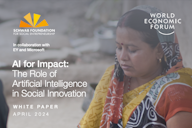
AI for Impact: The Role of Artificial Intelligence in Social Innovation, Schwab Foundation for Social Entrepreneurship
White papersThis report by the Schwab Foundation, EY, and Microsoft explores AI’s transformative role in global social innovation. Drawing on insights from 300 social innovators across 50 countries, it highlights AI’s impact on healthcare, environmental sustainability, and economic empowerment. The report examines barriers to adoption, opportunities for scalable solutions, and ethical considerations, offering case studies and practical guidance for leveraging AI responsibly to address societal challenges.
AI for Impact: The Role of Artificial Intelligence in Social Innovation, Schwab Foundation for Social Entrepreneurship-1.png?w=192)
Amplify Alliance
PlatformsThe Amplify Alliance supports not-for-profit organisations delivering employment and community services across Australia. It advocates for fair labour policies, offers training resources, and fosters collaboration to enhance workforce development.
Amplify Alliance.png?w=192)
‘An Introduction to Community Wealth Building', Ethical Fields
GuidesThis Ethical Fields guide explores community wealth building as a transformative approach to creating equitable, resilient local economies. It highlights principles like local ownership, democratic participation, and wealth redistribution, alongside practical strategies for stakeholders to implement this model in Australia.
‘An Introduction to Community Wealth Building', Ethical Fields.png?w=192)
‘Are We Mates Yet? Agreement-Making Between States and First Nations’, Dr. Tony Dreise
ReportsThis report analyses colonial impacts, truth-telling, and pathways to self-determination, offering insights into decolonisation. While focused on agreement-making between Australian states and First Nations peoples, its strategies for embedding equity and Indigenous sovereignty into governance, policy, and community development have broader relevance.
‘Are We Mates Yet? Agreement-Making Between States and First Nations’, Dr. Tony Dreise.png?w=192)
Arts Law Info Sheets
PlatformsArts Law offers free/low-cost legal advice and resources to Australian artists, with targeted services for Indigenous artists and resources for social enterprises.
Arts Law Info Sheets.png?w=192)
Australian Conservation Foundation (ACF): Advocating for a Healthy Environment
PlatformsThe Australian Conservation Foundation (ACF) is a leading environmental organisation dedicated to protecting Australia’s ecosystems, addressing climate change, and promoting sustainable development. Through advocacy, community engagement, and research, ACF empowers individuals and communities to take action on critical environmental issues, from biodiversity and land conservation to climate change. ACF’s work fosters systemic change, driving the transition to a more sustainable future for Australia and the planet.
Australian Conservation Foundation (ACF): Advocating for a Healthy Environment.png?w=192)
Australian Copyright Council (ACC)
PlatformsThe ACC is a non-profit legal service offering resources on copyright law, with guides and fact sheets for creators, including social enterprises.
Australian Copyright Council (ACC)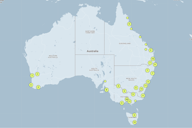
Australian Regenerative Food & Farming Map
PlatformsA growing network of people and businesses is driving regenerative food and farming across Australia—this map brings them into view.
Australian Regenerative Food & Farming Map.png?w=192)
Australian Tax Office (ATO)
PlatformsThe ATO offers essential tax and super info for businesses, including social enterprises, covering worker status, payments, and related obligations.
Australian Tax Office (ATO).png?w=192)
‘B Corps Bring Purpose and Profit for Sustainable Business’, Sustainability Mag
ArticlesCertified B Corporations (B Corps) are redefining business success by proving financial performance and social responsibility can coexist. A recent B Lab white paper highlights how B Corps outperformed traditional businesses during 2019–2021, demonstrating resilience, stronger revenue growth, and higher job retention. Their stakeholder governance model, which balances the interests of employees, communities, the environment, and shareholders, is key to their success. This article explores the impact and growing influence of B Corps in modern business.
‘B Corps Bring Purpose and Profit for Sustainable Business’, Sustainability Mag.png?w=192)
#BeyondtheRules — Balanced governance and ‘behaving well’ everywhere, every day.
ArticlesDark Matter Labs examines governance in social enterprises as an interconnected system, focusing on balancing power, autonomy, responsibility, accountability, and risk. It challenges traditional hierarchies, linking governance to broader social issues, and introduces the "Beyond the Rules" initiative.
#BeyondtheRules — Balanced governance and ‘behaving well’ everywhere, every day.-11.png?w=192)
‘Boundaries, Burnout, and the ‘Goopification’ of Self-Care’, The Ezra Klein Show, featuring Dr. Pooja Lakshmin
PodcastsThis podcast delves into the evolution of self-care from a radical feminist concept to a commercialised wellness industry, exploring why this shift has failed to curb rising burnout rates. Featuring Dr. Pooja Lakshmin, it challenges superficial wellness trends and offers practical, values-based strategies to redefine self-care for personal and collective empowerment.
‘Boundaries, Burnout, and the ‘Goopification’ of Self-Care’, The Ezra Klein Show, featuring Dr. Pooja Lakshmin.png?w=192)
Branding Frameworks - the Brand Pyramid and Keller's Brand Equity Model, Mindtools
ArticlesThe Brand Pyramid and Keller's Brand Equity Model are complementary frameworks for understanding and building strong brands. The Brand Pyramid illustrates five stages customers go through in developing brand loyalty: Presence, Relevance, Performance, Advantage, and Bonding. Keller's model, depicted as a four-level pyramid, focuses on how companies can build brand equity: Brand Identity, Brand Meaning, Brand Response, and Brand Relationships. Both models emphasise the importance of understanding customer perceptions and emotions, and creating positive brand experiences.
Branding Frameworks - the Brand Pyramid and Keller's Brand Equity Model, Mindtools.png?w=192)
‘Brave New Work’, Aaron Dignan
VideosThis video features Aaron Dignan, author of Brave New Work, sharing insights on transforming outdated work practices.
‘Brave New Work’, Aaron Dignan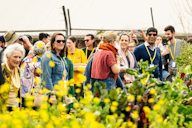
Building and Strengthening Rural Social Enterprise Networks
WebinarsACRE held an informative webinar that explored how social enterprises in rural Australia can build and strengthen networks to overcome the challenges of distance, scale, and under-resourcing. Drawing on insights from rural leaders, funders, and network builders, the session highlighted how collaboration, local leadership, and co-design can foster thriving, place-based ecosystems. It also introduced the upcoming co-design process for a Rural Social Enterprise Network for Australia.
Building and Strengthening Rural Social Enterprise Networks.png?w=192)
Building the Next Generation of Social Entrepreneurs
WebinarsThis resource is currently being developed. If you would like to be notified when it is published, please email team@understorey.org.au.
Building the Next Generation of Social Entrepreneurs-23.png?w=192)
Bush Heritage Australia: Protecting and Restoring Australia’s Ecosystems
PlatformsBush Heritage Australia is dedicated to conserving Australia’s unique biodiversity by managing ecologically significant land. Through collaboration with Traditional Owners, the organisation restores ecosystems and protects wildlife habitats, contributing to environmental resilience. Bush Heritage’s work focuses on land conservation, Indigenous knowledge integration, and ecological restoration, ensuring the preservation of Australia’s natural heritage for future generations.
Bush Heritage Australia: Protecting and Restoring Australia’s Ecosystems-1.png?w=192)
'Business for good: the size and economic contribution of social enterprise in Australia', Social Enterprise Australia
ReportsThis report by Social Enterprise Australia reveals that 12,033 social enterprises contribute $21.3 billion to Australia’s economy, employing over 206,000 people.
'Business for good: the size and economic contribution of social enterprise in Australia', Social Enterprise Australia-1.png?w=192)
'Business Model Canvas Explained', Strategyzer
VideosA 2-minute introduction to the Business Model Canvas - a tool that helps people design and develop business models for new ventures. This method comes from Strategyzer's best selling management book Business Model Generation and has been used by entrepreneurs and enterprises around the world.
'Business Model Canvas Explained', Strategyzer
Can Exponential Growth Save a Finite Planet? Cleaning Up Ep187: Azeem Azhar
PodcastsThis episode of the "Cleaning Up" podcast features Azeem Azhar, founder of Exponential View, discussing the role of exponential technologies like AI, renewable energy, and battery storage in addressing climate challenges. The conversation explores sustainable energy strategies, investments in cleaner energy, and the balance between technological progress and environmental stewardship.
Can Exponential Growth Save a Finite Planet? Cleaning Up Ep187: Azeem Azhar.png?w=192)
Centre for Appropriate Technology (CfAT)
PlatformsThe Centre for Appropriate Technology (CfAT) delivers innovative, community-driven solutions for remote Aboriginal and Torres Strait Islander communities. By integrating Indigenous knowledge with modern technology, CfAT develops essential infrastructure, provides training, and supports sustainable development to enhance self-determination.
Centre for Appropriate Technology (CfAT)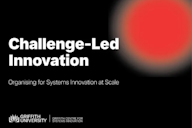
'Challenge-led Innovation: Organising for Systems Innovation at Scale', Griffith Centre for System Innovation (2023)
Case studiesThis resource introduces Challenge-Led Innovation (CLI) as a framework to address complex, large-scale challenges like climate change and inequality. Based on ‘Mission-oriented’ approaches developed by Mariana Mazzucato at UCL IIPP, CLI moves away from traditional innovation models by focusing on collaborative, mission-driven efforts across sectors and communities.
'Challenge-led Innovation: Organising for Systems Innovation at Scale', Griffith Centre for System Innovation (2023)-1.png?w=192)
'Civic Imagination Toolkit', USC
PlatformsThe Civic Imagination Toolkit, developed by USC, helps communities collaboratively envision equitable futures through storytelling and creative activities. It fosters dialogue, inclusion, and trust while empowering groups to address systemic challenges through imagination and innovation.
'Civic Imagination Toolkit', USC
Climate Council: Expert Advice on Climate Solutions
PlatformsThe Climate Council is an independent organisation offering science-based insights into climate change and solutions. It empowers Australians to take informed action on sustainability through research, public education, and community engagement. The organisation provides accessible reports on renewable energy, climate risks, and adaptation strategies, while also supporting citizens with campaigns and resources for climate advocacy, driving awareness and promoting a sustainable future.
Climate Council: Expert Advice on Climate Solutions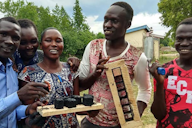
Co-Creating a More Equitable World: The Transformative Benefits of Participatory Design, MIT D-Lab
ArticlesThis MIT D-Lab article introduces participatory design as a powerful approach to fostering equity and creating sustainable solutions by engaging end-users as co-creators. It explores the benefits of building skills, trust, and ownership while producing durable, context-specific outcomes. By tailoring methods to different challenges, participatory design promotes inclusivity and addresses systemic inequities.
Co-Creating a More Equitable World: The Transformative Benefits of Participatory Design, MIT D-Lab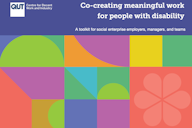
Co-creating meaningful work for people with disability
GuidesThis toolkit developed by Queensland University of Technology is designed for employers, managers and teams who want to create workplaces where people with disability can thrive, contribute their skills, and build meaningful careers.
Co-creating meaningful work for people with disability.png?w=192)
Common Approach to Impact Measurement
GuidesThe Common Foundations from Canada provide easy-to-understand general guidance on measuring impact. The report focuses on five essential practices that comprise a minimum standard of impact measurement.
Common Approach to Impact Measurement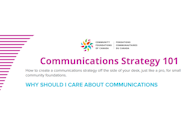
'Communications Strategy 101', Communities Foundations of Canada
GuidesLearn how to create an effective communications strategy with this practical fact sheet for community organisations. Covering key topics such as audience identification, crafting messages, platform selection, and evaluation, it provides a step-by-step guide with exercises and tips to help community foundations implement and refine their communications efforts.
'Communications Strategy 101', Communities Foundations of Canada.png?w=192)
Community Story Holding and Caretaking
WebinarsThis webinar explores how ethical storytelling can empower rather than exploit, centring the voices of those with lived experience. The presenters share their experiences in co-developing the Transformational Ethical Story Telling (TEST) framework, designed to shift power in storytelling by embedding values-based, anti-oppressive practices into everyday communications, branding, and policy.
Community Story Holding and Caretaking-1.png?w=192)
'Connecting Pathways to Employment with the Work Integration Social Enterprise (WISE) Model', Centre for Social Impact
ReportsThis report by CSI Swinburne introduces the WISE-Ability model, a framework for transforming Australian Disability Enterprises (ADEs) into more inclusive organisations. It supports employment pathways for people with disabilities, aligning with NDIS funding and fostering open employment opportunities.
'Connecting Pathways to Employment with the Work Integration Social Enterprise (WISE) Model', Centre for Social Impact.png?w=192)
Connecting Up (Infoxchange)
PlatformsConnecting Up helps Australian and New Zealand nonprofits strengthen their organisations through technology. This free platform, run by Infoxchange, offers discounted IT products, cloud services, hardware, software, and training by partnering with leading tech companies to empower social impact organisations.
Connecting Up (Infoxchange).png?w=192)
'Core Concepts of Doughnut Economics’, Kate Raworth
VideosThis video introduces Doughnut Economics, a framework by economist Kate Raworth that balances human needs with planetary health. Challenging traditional growth-focused economics, it emphasises well-being within ecological limits. The concept offers a compelling perspective on sustainable development and highlights the role of social enterprises in the impact economy, engaging stakeholders effectively.
'Core Concepts of Doughnut Economics’, Kate Raworth
Costs and benefits of tailored job support programs, Paul Ramsay Foundation
ReportsThis research demonstrates the costs and benefits of tailored employment support programs for people facing complex barriers to work, providing evidence and tools to help funders and organisations make effective investments in job-seeker programs. This report from 2024 aims to collate and strengthen existing evidence of ’what works’ in which contexts, while establishing an evidence base for the type and level of resourcing needed to achieve more enduring outcomes for those facing complex barriers to work.
Costs and benefits of tailored job support programs, Paul Ramsay Foundation
CSI Social Impact - Research for Social Impact
PodcastsThe Research for Social Impact Podcast from the Centre for Social Impact (CSI) Swinburne features researchers, practitioners and students discussing social entrepreneurship, finance, impact measurement, innovation and employment reform, offering deep insights into Australia’s social purpose ecosystem.
CSI Social Impact - Research for Social Impact-15.png?w=192)
'Cultural Safety in Australia: Discussion Paper', Lowitja Institute
White papersCultural safety is pivotal for achieving equity and inclusion in health and human services. This paper focuses on embedding cultural safety into systems for Aboriginal and Torres Strait Islander peoples, addressing systemic racism and power imbalances. While primarily health-focused, its insights are applicable across sectors like social enterprise, community development, and governance.
'Cultural Safety in Australia: Discussion Paper', Lowitja Institute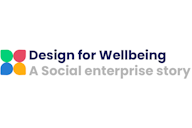
Design for Wellbeing: A Social Enterprise Story
PlatformsThis resource showcases findings from Australian Research Council studies on Work Integration Social Enterprises (WISE). It emphasises the role of social enterprises in enhancing individual and community wellbeing, particularly in disadvantaged and regional areas. The platform offers tools, insights, and strategies for social enterprises, policymakers, and ecosystem supporters to design workplaces and practices that integrate wellbeing principles, address systemic disadvantage, and foster resilience. Key focus areas include regional community wellbeing, youth health equity, and leveraging organisational design to influence positive social outcomes.
Design for Wellbeing: A Social Enterprise Story.png?w=192)
‘Diversity, Equity, & Inclusion in the Workplace: A Strategic and Actionable Guide’, Diversity Australia
GuidesThis Diversity Australia resource provides practical guidance on integrating diversity, equity, and inclusion (DEI) into workplaces. It explores key concepts, outlines benefits like improved culture and business outcomes, and offers strategies for fostering inclusivity. Highlighting leadership's role and the need for ongoing training, it frames DEI as both a moral and strategic imperative, emphasising that building an inclusive workplace requires sustained commitment.
‘Diversity, Equity, & Inclusion in the Workplace: A Strategic and Actionable Guide’, Diversity Australia
Doing Business on Country
WebinarsThe Land Back Foundation held an interactive webinar exploring First Nations’ worldviews on social enterprise and encouraging actors across the social enterprise sector to reflect on our own worldviews and what they mean for our relationships with community and Country.
Doing Business on Country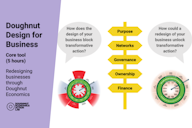
Doughnut Economics Action Lab (DEAL)
GuidesThis is a website and workshop tool for companies to engage with Doughnut Economics. It aims to help transform the deep design of a business e.g. ownership and governance, to ensure it can use the strategies, practices and business models needed to help humanity into the Doughnut.
Doughnut Economics Action Lab (DEAL).png?w=192)
‘Do you know all 17 SDGs?’, United Nations
VideosThis article provides a concise overview of the 17 Sustainable Development Goals, promoting prosperity while safeguarding the planet. These goals emphasise poverty eradication, economic growth, social equity, and environmental protection to address global challenges effectively.
‘Do you know all 17 SDGs?’, United Nations.png?w=192)
‘Earth for All: A Survival Guide for Humanity - Executive Summary’, Earth4All
ReportsEarth4All’s two-year research investigates pathways to achieve global wellbeing within planetary boundaries by 2100. It examines two scenarios: ‘Too Little Too Late,’ continuing current economic policies, and ‘Giant Leap,’ requiring bold decisions and investments. The report identifies five critical turnarounds—poverty, inequality, women’s empowerment, food systems, and energy transformation—and calls for active governments, wellbeing economies, and urgent action this decade. Using system dynamics models, it highlights affordable economic shifts and proposes citizens’ assemblies to overcome political barriers.
‘Earth for All: A Survival Guide for Humanity - Executive Summary’, Earth4All.png?w=192)
‘Expanding Concepts of Scale’, Gord Tulloch
Articles‘Can you scale your social enterprise?’ is a question often heard. This blog by Gord Tulloch challenges a narrow view of ‘scale’, which usually refers to volume and growth. Tulloch suggests there are five pathways to achieving ‘scale’ or impact, including increasing numbers, changing the rules, changing beliefs, changing norms, and changing the conditions that enable agency and distributed action.
‘Expanding Concepts of Scale’, Gord Tulloch
Do you know of a resource that could benefit the social enterprise sector?
Submit resource
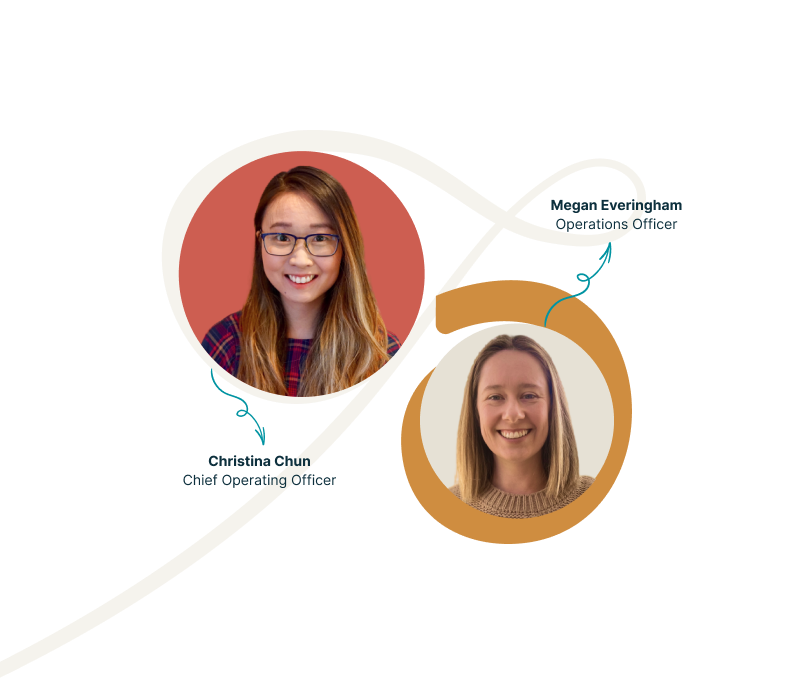
We’d love to hear from you!
Reach out to one of our team members, and share input and ideas about how we can evolve Understorey.
Get in touch